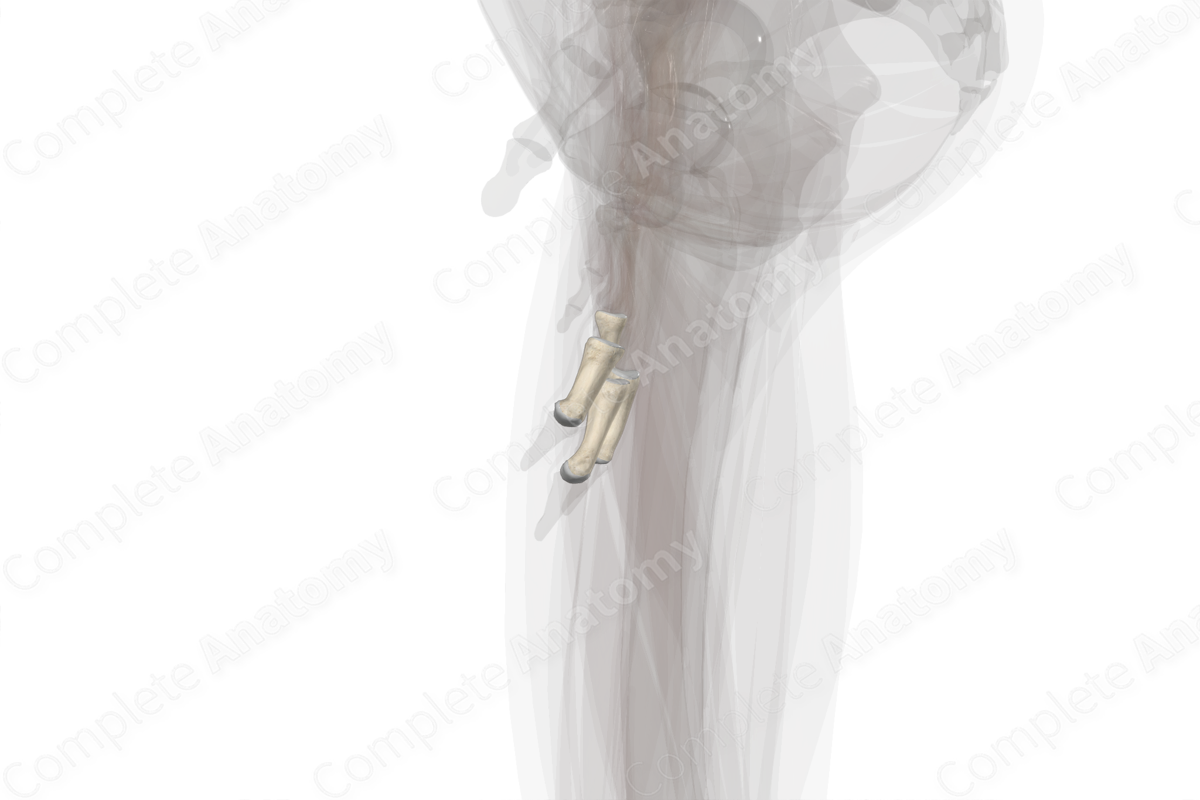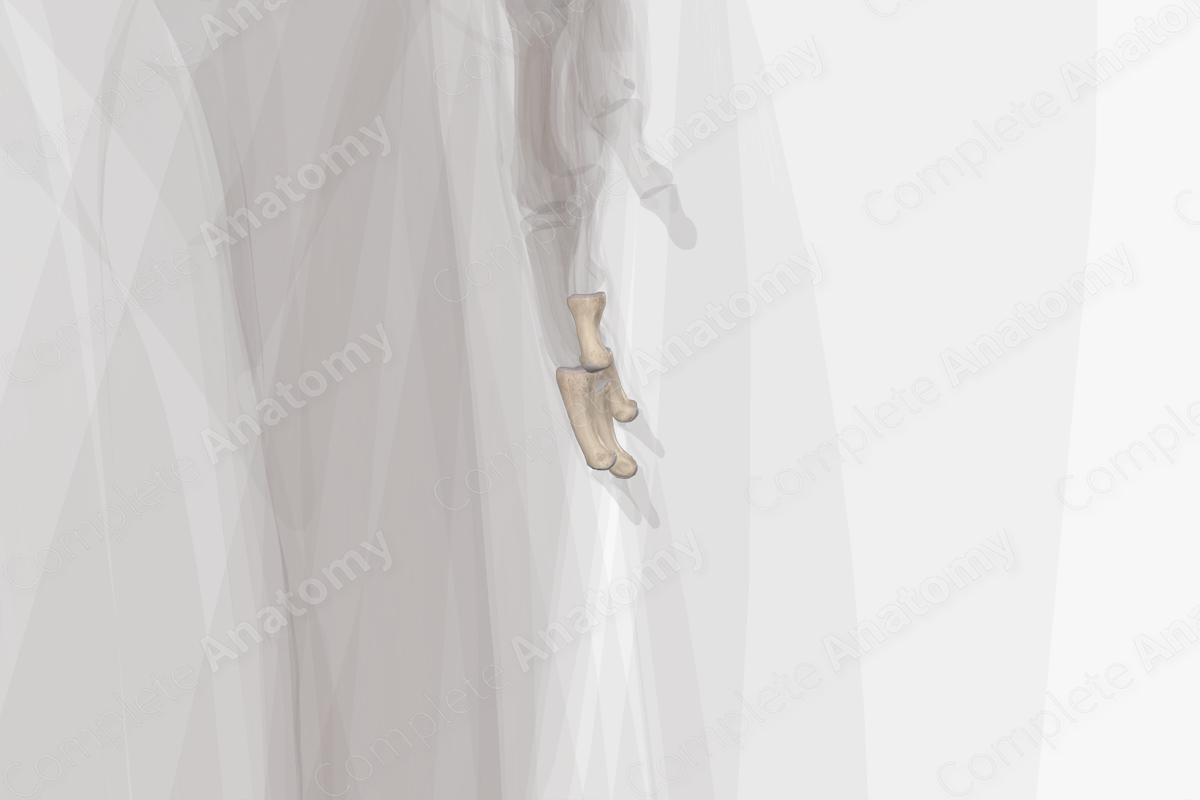
Description
The middle phalanges of the hand are one of the three rows of bones of the fingers, the other two being the proximal and distal phalanges. There are four middle phalanges of the hand, each classified as a long bone, which form the middle segments of each of the four fingers but not the thumb, which lacks a middle phalanx. They are located distal to the proximal phalanges, and proximal to the distal phalanges of the fingers.
Overall, the proximal phalanges are the largest and longest of the phalanges in the hand, the distal phalanges are the smallest and shortest, and the middle phalanges are intermediate in size. The proximal and middle phalanges share a similar morphology, while the distal phalanges are quite different in appearance.
Related parts of the anatomy
Learn more about this topic from other Elsevier products





